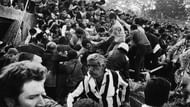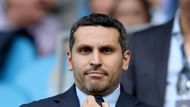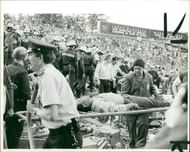On February 14, 2020, Manchester City was banned from participating in UEFA Champions League for the ensuing two years, following a massive schism of the Financial Fair Play (FFP) rules of the apex body of football in Europe. The ban is supposed come into action next year and will end in 2022. However, like always, a few football fans have twisted this incident to rekindle the darkest days in English football which led to the ban of all English clubs from European Championships for an indefinite period, following the Heysel Stadium disaster of May 1985 in Brussels. After serving a five-year ban, the English clubs were allowed to participate in Europe. However, Liverpool was asked to serve the ban for three more years which was later reduced to one.
Let's try and declassify the differences between these two bans which will echo for years to come in the canon of English football.
In the first place, we will have to comprehend the two bans which were imposed on the English clubs and their respective reasons.
The Heysel Stadium disaster was an act of extreme hooliganism that led to the deaths of 39 people and injuries to more than 600. In an attempt to spark chaos in the stands, Liverpool fans charged at the Juventus fans in the European Cup finale, squeezing them against a wall, which could not contain the pressure as it was already in in a dilapidated state. The wall collapsed, thereby killing the unfortunate ones and injuring several others.
Later inquiries revealed that in an attempt to galvanise animosity between the Italian firebrands and the English giants, this was a deliberate act fuelled by sheer hatred committed by the English fans.
Cut to the present, the Manchester City ban is about corporate skulduggery and blatant abuse of money. This article will aim at providing three reasons that why these two bans are poles apart.
#1 Heysel was mansluaghter, City's ban is due to financial fruad

The 1985 ban on English clubs was due to criminal charges that led to manslaughter whereas the one imposed on Manchester City had fraud stamped all over it.
According to ultras of the past, if there is one thing that the current generation of fans have completely forgotten, it is to showcase aggression. Probably this is in good hope for the sport as aggression has never really led someone to glory. In today's world of ultras, it is more about a battle of showboating. Titanic tifos, incredulous pyrotechnics, and incessant chants being belted out ceaselessly from the stands, making it a spectacle of lifetime to witness.
The Heysel ban was strictly imposed on English clubs to ensure that their infamous hooliganism shouldn't spill out of the country. The act wasn't only egged on by the individuals, but also unhappiness about the decision of choosing the Heysel Stadium by the UEFA when the stadium was already in astate of disrepair and wreckage.
However, the current prohibition slapped on City has glam penned all over it. It ain't about fans who carry a bazooka on their shoulders and fire plastic bottles at the players, but it is about an effort by the owner of the club to lure in more number of people to witness the best of the stars plying their trade for the Cityzens.
Also read | 3 players who could leave Manchester City after the UEFA ban
#2 This is a corporate cover-up while Heysel was hooliganism

The reason Manchester City was imposed with such austere sanctions was due to the fact that the annual fee for the club which came close to £67.5 million was supposed to be borne by Etihad, as they were City's primary sponsor. However, leaked emails that wreaked havoc, courtesy Rui Pinto, the bloke who clashed with big baddies of the world with his superior hacking skills, divulged an entirely different scenario.
It was found that Sheikh Mansour bin Zayed al-Nahyan, the owner of City, and a member of the Arab ruling family, bankrolled a lion's share of this amount personally, wherein all Etihad could manage to shell out was only £8 million.
This was a flagrant flout of the FFP rules which showed that Manchester City's splurge has clearly prompted inequality. After two years of rigorous inquest, UEFA finally arrived at the conclusion that City must suffer the consequences and imposed a two-year ban and a fine of €30 million.
Now we will delve a little deeper into the Heysel stadium catastrophy. It was supposed to be the 1985 European Cup final to be duked out between Liverpool and Juventus. Despite, complaints from other clubs about Heysel being a cesspool, UEFA still adhered to their erstwhile decision of picking Heysel as the venue for the finale.
The stadium was filled to the rafters with staggering numbers of almost 60,000 people in the stands. The stadium was divided into six different zones. Zones O, N and M were supposed to host Liverpool supporters whereas zones X, Y and Z played host to Juventus. These two zones were separated by a chain-link fencing and a minimal police stand.
A few Liverpool supporters started throwing stones that fell from the ruins at the Juve fans in the zone Z. The throwing intensified as the game was approaching closer to a kick-off. The hammer fell when a handful of Liverpool fans decided to overpower the police, backed vociferously by the remaining numbers.
The Juve supporters started fleeing after this sudden burst, and they ended up pressed against the wall that couldn't hold further and gave in to the mass of people.
A few reports stated that the collapse also paved the way for several supporters to escape. Bodies were pulled out of the rubble, sights that invoked melancholy and rage unparalleled in the hearts of football fans. After the dust settled, and with intense inquiries following up, 14 Liverpool fans along with police captain Johan Mahieu and a majority of brass taking care of the game were convicted and sentenced.
Blood and sweat pitted against money swindling isn't the same. Hence, this must act as a reminder to fans who are drawing contrast to both of these bans.
Also read | 3 possibilities at Manchester City in the upcoming seasons
#3 This is UEFA at their investigative best, Heysel inquiry was easier

It isn't an easy task to reach the roots of a problem when you are up against magnates with unparalled clout. UEFA was up against the cream of the brass when leaked emails by Rui Pinto led to the mishap of the Blues from Manchester.
This needed the best of UEFA's investigating members to slap charges against City and pass on a verdict. More importantly, there wasn't any help from any external force like the police. Endless questioning, rigorous procedures and finally, UEFA made it clear that this time the ban will be implied.
However, when it came to the 1985 Heysel stadium, UEFA had multiple sources that came to their aid. Though it wasn't an easy task to identify the hooligans from the massive crowd that entered the stadium, the collaboration of the constabulary and UEFA worked wonders in this case and that too in a very short span of time.
Before drawing a blurry line that would connect both the incidents. Though both the incidents are punishable by offence, yet mingling one ban with the other, just to stamp your ken about the game isn't a wise act.
With all said and done, Manchester City will be appealing to the Committee of Arbitration for Sports at the earliest possible. We have not heard the end of this tale as of yet.
